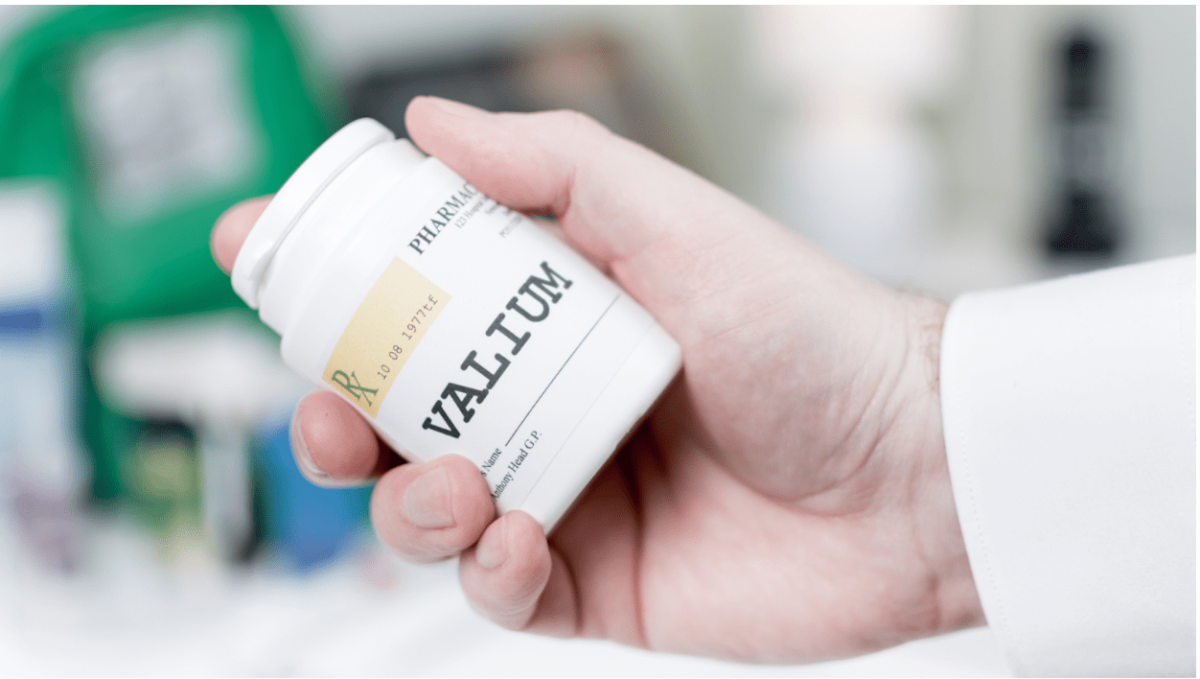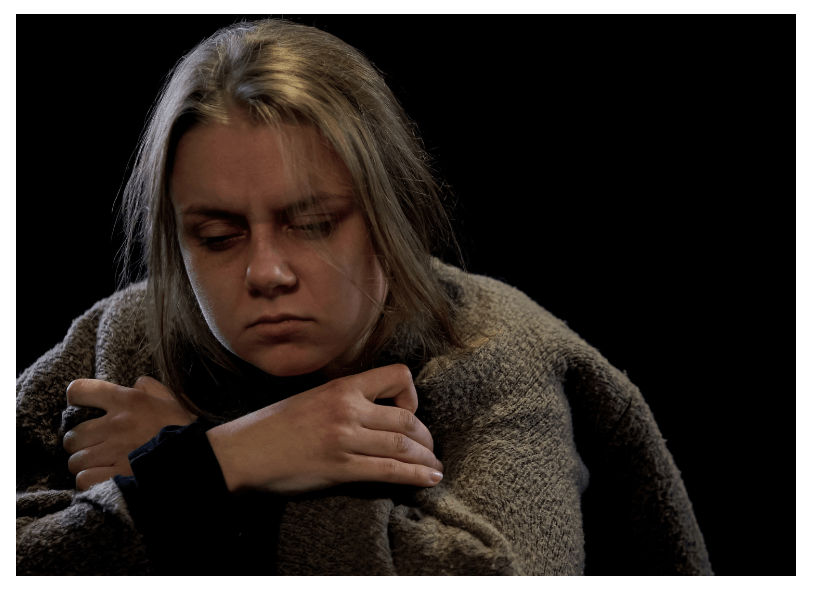

Valium is a prescription drug that effectively treats insomnia, anxiety, muscle spasms, alcohol withdrawal, and seizures. It works amazingly well to treat these things, but it’s also highly addictive.
Also knows as diazepam, Valium is a type of benzodiazepine, or benzo. If you don’t know about benzos, it’s crucial to educate yourself about dangerous they can be when not used properly. In a nutshell, benzos like Valium are:

- easily addictive
- challenging to quit
- harmful to your brain
Taking Valium for more than four months makes your body more likely to become dependent. And when you become dependent on benzos, you need a larger dose to feel its euphoric effects. Then your seemingly harmless prescription turns into an addiction.
That’s when you need Valium addiction treatment, starting with a detox program. As with any other drug
addiction treatment, you are going to feel symptoms of Valium withdrawal.
What is Diazepam Withdrawal?
What is a Substance-Induced Mood Disorder?
Your body naturally produces anxiety-relieving chemicals. But when you suffer from anxiety, seizures, insomnia, or other Valium-approved medical concerns, you may need a little more help to calm that anxiety. While a diazepam prescription alone isn’t necessarily dangerous, the euphoric effect the drug delivers can be.
With benzos like Valium, you don’t feel anxious, and your pain seems to fade away. Sounds wonderful, right?
Wrong. Because once you start taking Valium more often than needed, you’re on a one-way track to addition.
As the drug accumulates in your body and your tolerance rises, your body produces less of the natural anxiety-relieve chemicals. And that leads to dependence. As we stated earlier, dependence is often quickly followed by addiction.
Once you realize you’re addicted and try to cut back, you begin feeling diazepam withdrawal.
So “what is diazepam withdrawal”? Basically, it’s your body attempting to regulate its natural anxiety-relieving chemicals without the help of Valium. And unfortunately, it’s not exactly a walk in the park.
Fentanyl Dangers: Now the Deadliest Drug in the U.S.

Symptoms of Valium Withdrawal
First of all, it is essential to point out that Valium withdrawal can be extremely dangerous when you try to quit “cold turkey” on your own. To successfully treat your addiction, you’ll first have to undergo the process of detoxification. And detoxing with the guidance of a medical professional is highly recommended.
Detoxing with the help of professional Valium addiction treatment can help you eliminate diazepam from your body while simultaneously minimizing symptoms of Valium withdrawal.
The severity of your diazepam withdrawal symptoms depends on your level of use – how long and how much you’ve regularly taken. The Diagnostic and Statistical Manual of Mental Disorders (DSM-5) suggests that just 15 mg of Valium daily for several months can lead to withdrawal symptoms. If you’ve used the drug heavily for a long time, you will likely experience more severe Valium withdrawal symptoms.
Some of the most common symptoms of diazepam withdrawal include
10 Warning Signs of Prescription Opioid Abuse

- headaches
- vomiting
- abdominal cramps
- confusion
- numbness
- increased heart rate
- anxiety
- restlessness
- insomnia
- irritability
- elevated blood pressure
- tremors
- panic attacks
- depression
- loss of appetite
- mood swings
Unfortunately, because diazepam is meant to provide extended anxiety relief, Valium withdrawal often lasts longer than other Benzos. While everybody’s detox and withdrawal timeline will look different, Valium withdrawal typically lasts anywhere from three to six weeks.
It’s also important to note that while most of this information refers to the acute phase of diazepam withdrawal, there is the possibility of experiencing post-acute withdrawal syndrome (PAWS). This longer-lasting type of withdrawal can occur months or even years after detoxing from Valium.
Valium Withdrawal Timeline
Again, we want to reiterate the importance of detoxing from Valium with the help and guidance of a medical professional. (If you’re in the San Diego area, our Intensive Outpatient Program (IOP) for addiction is an excellent option.)
Your diazepam withdrawal timeline may not look exactly as follows, but here is a general guideline of what you can expect.
The First Week After Your Last Dose of Valium
The initial signs of Valium withdrawal typically occur within the first 12-24 hours. While your symptoms are likely to begin mildly, they will intensify.
- restlessness
- sweating
- irritability
- anxiety
- muscle spasms
- body aches
Dangers of Combining Adderall and Xanax
Week Two
The second week after taking your last dose of Valium may be the most challenging since this is typically when your withdrawal symptoms peak.
- sweating
- insomnia
- nausea
- headaches
- abdominal pain
- muscle pain
Weeks Three to Four
During the third phase of diazepam withdrawal, your systems begin to dissipate. However, you may still experience:
- anxiety
- tension
- tremors
- insomnia
- mood swings
Top Warning Signs of Prescription Opioid Abuse
Weeks Five +
Once you make it through the first month of Valium withdrawal, you’ll begin to feel much better. While you may still experience some minor symptoms, your emotions are much more likely to feel stable.
Finding Valium Addiction Treatment
Detoxing your body from Valium and gaining the strength and tools to avoid relapse isn’t something you want to endure on your own. Whether you’ve been abusing diazepam for weeks, months, or years, there is Valium addiction treatment available.
According to the Substance Abuse and Mental Health Services Administration (SAMHSA), when you have a Valium addiction combined with another mental illness, your Valium addiction treatment will most likely include a detox program, therapy, and medication management.
And that’s just what we provide here at BOLD Health in San Diego.
One of our beautiful facility’s most proven Valium addiction treatment options is our IOP for addiction. Because our extensive team of psychiatrists, therapists, and nurse practitioners includes individuals highly-trained to treat addiction, you’re in good hands at BOLD Health.
When you enroll in our IOP for Valium addiction treatment, you’ll receive research-backed treatment from our compassionate, experienced team using a holistic approach. Following your initial evaluation, your treatment team will curate the ideal 10-week program designed specifically for you.
3 Facts About Benzo Addiction and Abuse
Your IOP for addiction program may include:
- individual therapy
- group therapy
- medication management (if needed)
- optional family therapy
Your road to recovery may be challenging, but we’re here to walk with you every step of the way. And because our IOP allows you to receive effective treatment while also returning to your school, work, and family responsibilities at night, you won’t have to put your life on hold to get the help you need.

Contact us for more information about our Valium addiction treatment options, including our highly-effective IOP for addiction. Recovery is possible. And we’re here to help.
1 Comments



[…] What You Need to Know About Valium Withdrawal […]